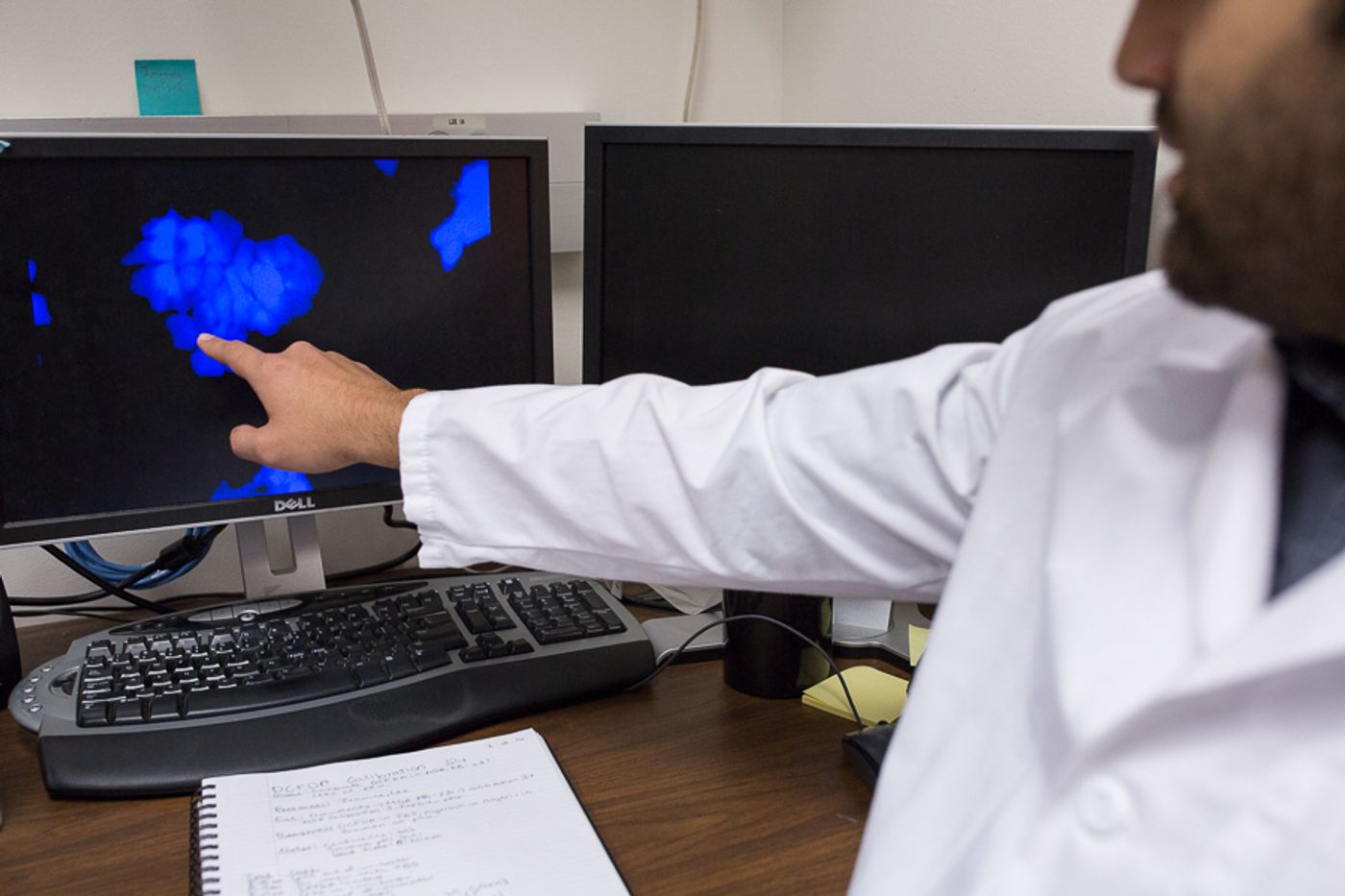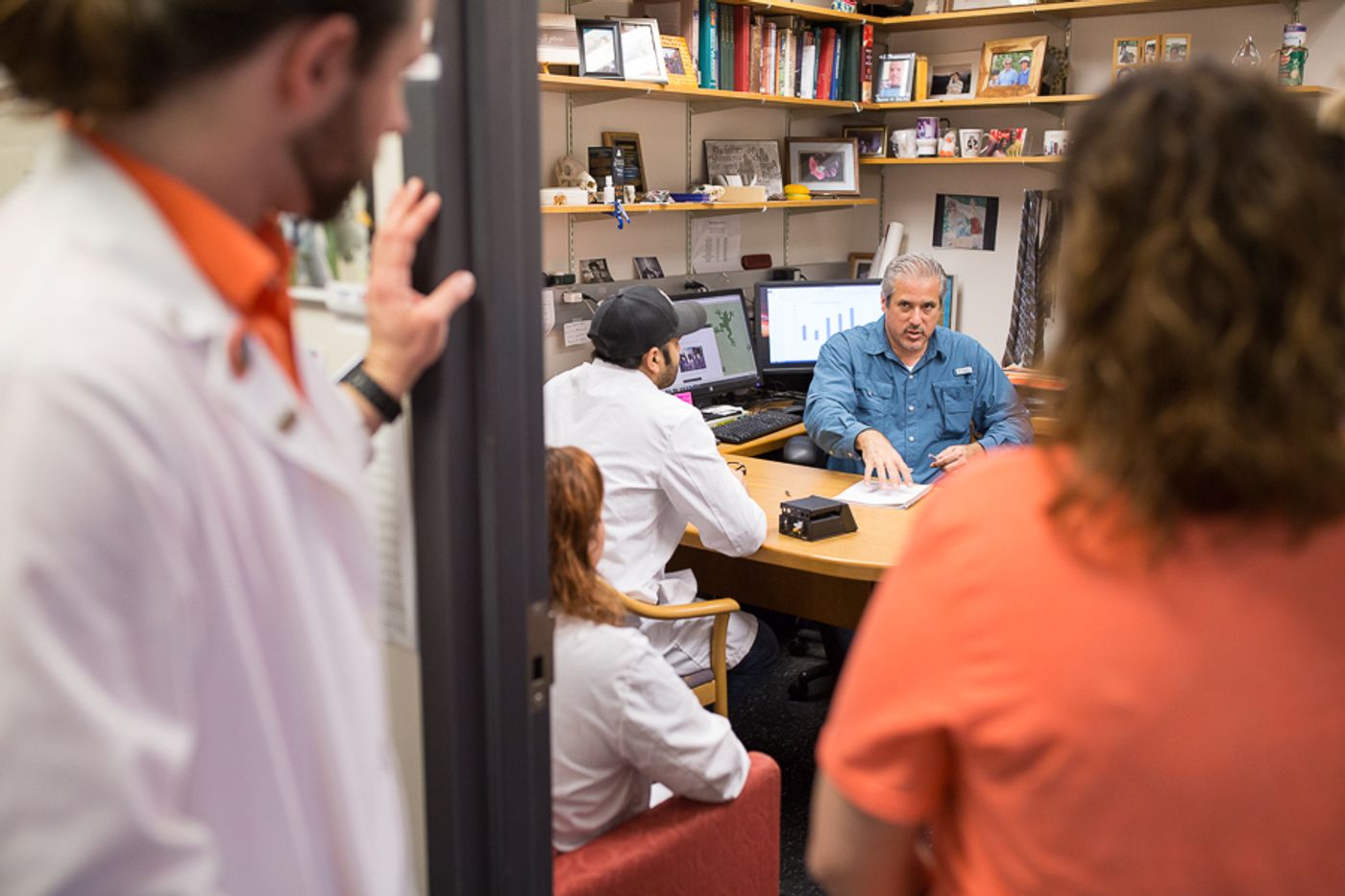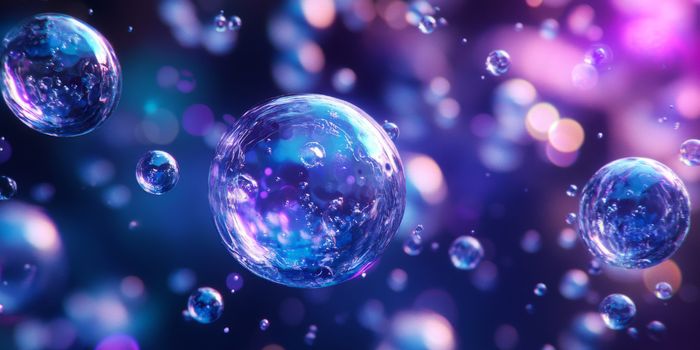The crux of anticancer efforts has always been to identify the cancer target and kill it without harming nearby healthy cells. Now, researchers from the University of Texas San Antonio (UTSA) say they can accomplish this feat for hard-to-treat breast cancer with just an
injection and light.

The technique is known as photodynamic therapy, and involves using light to activate chemical reactions inside of tumors, while sparing healthy cells. Some variations of this technique creating a deadly form of oxygen in the tumor cells. Others heat up the tumor cells so that it can’t survive. The newest trick by researchers at San Antonio is to use light to change the acidity inside the tumor cells. The end result is cellular suicide due to a hostile acidic environment.
"Even though there are many different types of cancers, the one thing they have in common is their susceptibility to this induced cell suicide," said Matthew Gdovin, UTSA biology professor and co-author of the study.
To alter the cancer cell’s acidity, Gdovin and his team injected tumor cells with a chemical compound known as nitrobenzaldehyde. Once the chemical is sufficiently diffused throughout the tumor, a light beam activates the chemical reaction, raising the internal pH inside the cells. When the cells become highly acidic, they commit cellular suicide.
Interestingly, cancer cells are adept at the reverse process – that is, making an acidic environment on the outside of its cells. Gdovin explained this is a mechanism that cancer cells use for survival. "All forms of cancer attempt to make cells acidic on the outside as a way to attract the attention of a blood vessel, which attempts to get rid of the acid," he said. "Instead, the cancer latches onto the blood vessel and uses it to make the tumor larger and larger."

In a mouse model of triple negative breast cancer, Gdovin and his team found that nitrobenzaldehyde treatment followed by light activation stopped tumor growth and doubled the mice’s survival rate. Impressively, the team boasts the process is minimally invasive and highly efficient, wiping out nearly 95 percent of cancer cells in just two hours.
"There are so many types of cancer for which the prognosis is very poor," said Gdovin. "We're thinking outside the box and finding a way to do what for many people is simply impossible." Indeed the team showed success in triple-negative breast cancer cells, which accounts for 15 to 25 percent of breast cancer mortalities. Furthermore, treatment options for these intractable cases are limited, and the cancer can often become resistant to treatment. In the next phases, the team hopes to use photodynamic therapy to treat tumors located in the brain stem, aorta, or spine, which are some of the the hardest places to reach and treat.
Additional source:
UTSA press release










